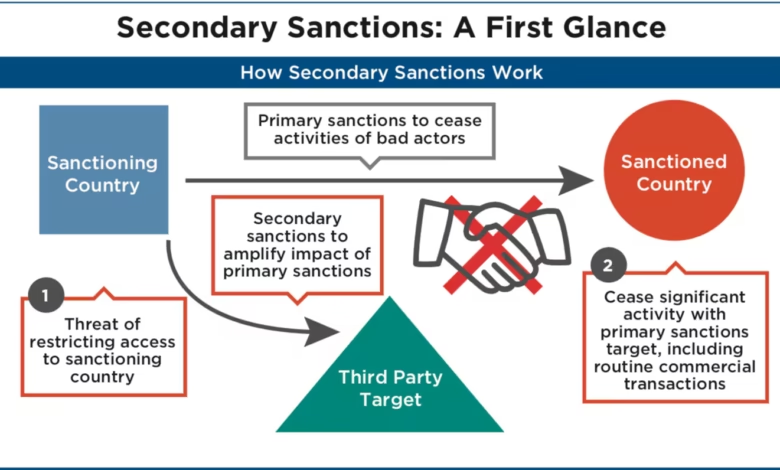What Are Secondary Sanctions and How Do They Work?

Secondary sanctions are powerful tools used by governments, especially the United States, to pressure foreign entities. Unlike primary sanctions, which target their own citizens or businesses, secondary sanctions apply to non-citizens and foreign companies. These penalties punish third-party actors who engage with a sanctioned country, entity, or individual.
How Secondary Sanctions Differ from Primary Sanctions
Primary sanctions apply directly to individuals, companies, or countries. They restrict trade, financial services, or travel. For example, U.S. companies cannot do business with North Korea under primary sanctions.
Secondary sanctions go a step further. They punish foreign parties who do business with those already under primary sanctions. The goal is to isolate the sanctioned target further, cutting off all external support, even from neutral nations.
The Mechanism Behind Secondary Sanctions
Secondary sanctions rely on access to key markets. The U.S., for example, controls access to the U.S. dollar, international banking systems, and major trade routes. When a company violates secondary sanctions, it may lose access to U.S. markets, banks, or investment opportunities.
This threat forces companies and countries to choose: either do business with the sanctioned party or stay connected to global markets. Most choose the latter to avoid losing their financial lifeline.
Examples of Secondary Sanctions in Action
The United States has imposed secondary sanctions on companies helping Iran evade oil sanctions. Chinese banks faced pressure when suspected of dealing with North Korea. Russian entities were also targeted after the Ukraine invasion, affecting many European firms.
These sanctions don’t just hit the intended targets. They impact global supply chains and reshape trade patterns. Even neutral companies change behavior to avoid being caught in the crossfire.
Why Countries Use Secondary Sanctions
Secondary sanctions serve multiple purposes:
- Expand pressure without military action
- Influence foreign policy through economic leverage
- Deter others from engaging with hostile regimes
They offer a non-violent way to push for change. Governments use them to enforce international norms and isolate bad actors.
Challenges and Criticism of Secondary Sanctions
Critics argue secondary sanctions overreach. They claim one country should not control the actions of foreign firms. Some see it as a violation of sovereignty and free trade.
Others warn it may cause long-term damage. Overuse of sanctions could lead countries to build alternative systems, bypassing the U.S. dollar or SWIFT network.
Despite the criticism, sanction screening remains effective—for now. But growing resistance may reduce their power over time.
How Companies Can Protect Themselves
Firms operating globally must stay alert. They should:
- Conduct due diligence on all partners
- Monitor sanction updates regularly
- Implement strong compliance programs
By taking these steps, businesses can reduce risk and avoid penalties. Ignorance is not a defense when facing secondary sanctions.
The Future of Secondary Sanctions
As geopolitics grow more complex, secondary sanctions will likely expand. Nations will continue to use them to control strategic outcomes without direct conflict.
However, global pushback may limit their reach. Some countries are already creating alternative systems to reduce exposure.
Still, for now, secondary sanctions remain a central weapon in modern economic warfare.
Conclusion
Secondary sanctions extend the reach of domestic policies into the global arena. They are sharp tools used to shape behavior, punish violators, and protect national interests. As the world becomes more interconnected, understanding how these sanctions work is more important than ever.






